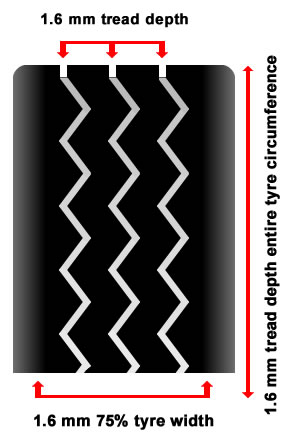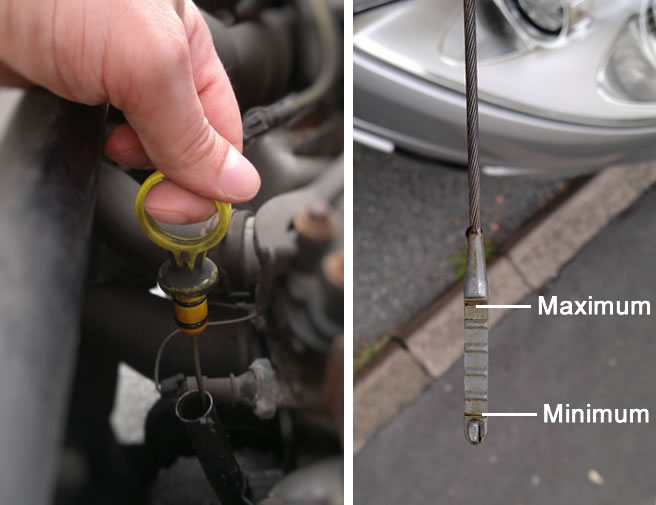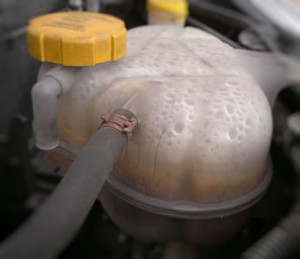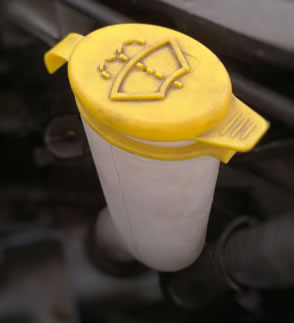Basic car maintenance is something many of us neglect, understandably due to dirty oily hands, and is especially an unwanted chore in the cold winter months.
However, regular simple and cheap car maintenance can increase the lifespan of your vehicles engine, reduce running costs and reduce the potential of breakdown – something we all dread.
These car maintenance tips although not exhaustive, offer the basics of vehicle maintenance for those new to car ownership to help maintain your car’s peak performance and reliability.
Also provided is a car maintenance checklist that can be freely downloaded to ensure all components are covered, along with a schedule for when maintenance should be completed.
TYRE MAINTENANCE
Our car tyres are frequently neglected, not surprising due to their maintenance is typically tedious and dirty. Regular tyre maintenance however can ensure your tyres are in a safe condition, but help to keep your car at its most economical. Tyre neglect can often see a motorist driving on under inflated tyres. Under inflated tyres not only shorten the tyres lifespan, but also increase fuel consumption.

If a tyre is under inflated by as little as 10%, although possibly not noticeable by the eye, it can increase your fuel consumption by as much as 2.2% and if you factor that over several months, that’s a lot of money wasted. Under and over inflated tyres cause uneven wear as there’s uneven contact with the road. Keeping tyres inflated to the manufacturer’s recommended pressure will ensure optimal fuel economy and tyre lifespan.
How do I know what my tyre pressure is
Recommended tyre pressures are not found on the tyre itself. Pressures found on the tyre wall are their maximum pressures. The recommended tyre pressure for your vehicle can be found:
- in the user manual of your vehicle
- or on a label on the door or door frame of the vehicle (See how to read tyre pressure sticker)
- or on the inside of the fuel flap
- if you are unable to find the recommended tyre pressure, call a tyre service centre who will be happy to help
How often to check tyre pressures
Check tyre pressures at least once every month. If you cover high mileage, more frequent checks will ensure optimal fuel economy. If possible check pressures when tyres are cold as manufacturers guidelines are based on a cold tyre. Maintenance should also include inspection of tread depth, even wear and general condition of tyre to ensure tyres are safe and legal. See below for further information on tyre maintenance, safety and how to keep your tyres legal. Whilst undergoing car maintenance, don’t forget the spare tyre. If you are unfortunate to receive a puncture, you will need your spare tyre to be in a usable and legal condition.
More information
- Further reading on Legal tyre tread depth, how to check and tyre maintenance
Annual MOT
Motorists have a legal obligation to subject their vehicle to an annual MOT test on vehicles three years of age or more. Although part of the MOT test involves checking tyres for safety and legality issues, the MOT certificate only guarantees your car is road worthy and legal at that particular moment. Continuous and frequent tyre maintenance checks must be conducted throughout the year.
More information
- For further information on MOT’s, see What is an MOT test?, When do I need an MOT? and Driving without an MOT
Engine maintenance
To ensure your car is running at optimal performance and to reduce the potential of breakdown, car maintenance must also include basic engine checks.
Why should I check engine oil
Engine oil lubricates the moving components inside the engine. If engine oil is significantly diminished, metal engine components will move against other metal components and without lubricant will cause heat and friction. This friction will cause damage to components and ultimately seize the engine if not dealt with quickly. Car insurance does not cover engine wear or replacement. This can be hugely expensive so frequent maintenance is recommended.
How often should you check your oil
How often you should check your engine oil level depends on your mileage and the engine. The higher your mileage, the more often you should check and all engines differ. Some engines use more oil than others so take this into account depending on how the oil level has changed between checks. An average driver should check their engine oil at least once per month. For those that cover higher mileage or have less than perfect engines, once per week may be necessary. It’s especially important to check engine oil levels before a long journey.

Checking the engine oil level
A car maintenance oil check is simple though may involve getting dirty oily hands. Put on a pair of rubber washing up gloves if this concerns you. Either check your engine oil before you set off, or wait for your engine to cool down before commencing as this allows the oil to settle. Ensure also that your car is positioned on a relatively level surface to allow for accurate reading.
Come prepared with an old cloth or tissue and fresh new oil that can be purchased in most petrol stations and car accessory outlets. Most vehicles will run on the cheapest off-the-shelf semi synthetic, although if your car is a little more unique or sports, it may require a certain type of oil. If unsure, consult your owner’s manual.
Open the bonnet and locate the dipstick. Dip sticks are located at various places depending on make and model of the vehicle. They are typically highlighted and look similar to the yellow one in the image above. Completely remove the dipstick, wipe the end between the minimum and maximum markers clean and replace.
You need to wipe and replace as the current level of oil displayed initially will not represent an accurate reading. Remove the dipstick once again and ensure oil levels are somewhere between the minimum and maximum markers.
If the level is way under halfway towards the minimum, remove the oil cap on top of the engine and carefully pour a small amount of oil in. Wait a moment, replace the dipstick and check levels again. You may need to repeat this process two or three times until levels reach half way or more. Do this process in small increments of oil to ensure you do not overfill. Putting too much oil in the engine can damage it. Firmly secure dipstick and engine oil cap to finish. See how to check engine oil for further information.
Engine coolant
Engine coolant is a mixture of water and antifreeze. The coolant circulates around the engine preventing the engine from overheating. As the coolant contains antifreeze, it will not freeze in sub-zero temperatures. Coolant is kept cool by means of a radiator that whilst moving, air travels through fins to cool the liquid that resides in them. Electric fans produce airflow if the car is stationary and getting hot.

Antifreeze can be purchased in most superstores and car accessory outlets and will provide instructions on the label for the correct mixture measurements with water. When mixed, locate the radiator header tank. It will look similar to the one in the image to the right.
Your vehicle handbook will inform you of its location if you are unable to see it. Unscrew the cap and pour the liquid inside. There should be a marker on the tank to show you how much coolant to pour in.
How often should I check engine coolant
As radiator header tanks are typically opaque to allow for a visual glance of liquid levels, simply check the coolant levels each time you check the oil. A car engine in good working order should seldom need filling. Be cautious however, allowing levels to drop too low will cause the engine to run hot and potentially overheat, resulting in damage.
The what is engine coolant guide offers an in-depth explanation on how engine coolant / antifreeze benefits the engine in both winter and summer, the types of antifreeze that can be purchased and which type of antifreeze should be used.

Windscreen washer reservoir
Although it may not seem particularly important to ensure that there is plenty of liquid in the windscreen washer reservoir, you may change your mind when driving down a busy wet road where other vehicles are throwing up mud on your windscreen.
Being unable to clean the mud off leaves you with very limited vision of the road ahead. Simply fill the reservoir to the top with regular water. Avoid using washing up liquid as it can smear windscreens.
Special formulated windscreen washer can be purchased in car accessory outlets if you want something a little more efficient at cleaning the windscreen than regular tap water.
How often you should check the reservoir really depends on how much you use it. It is potentially dangerous on a wet road if the reservoir runs dry, so after you have used it, try to remember to refill.
Brake fluid reservoir
A car that is good working order will in most cases not need brake fluid added to the reservoir. The braking system is a sealed unit, so if there’s a loss of brake fluid, it is likely to suggest a leak in the system. Check the reservoir occasionally however to ensure no loss of fluid. If brakes feel spongy and less effective, this may also suggest a leak of fluid.
Check vehicle lighting
If one or more of your lights fail, it is not only potentially dangerous, but can also be an traffic offence depending on which light is defective. A defective brake light can for example see a driver issued with a Penalty Charge Notice that incurs three penalty points and a £60 fine.
Most cars don’t tell you if a light has failed, so it’s down to the driver to check. Along with checking night driving lights, activate your hazard lights as this is the easiest method for checking if all indicators are working. If when activating your indicators whilst driving they tick twice as fast as normal, this suggests a bulb failure. Brake lights can be harder to check and may require an extra person to assist.
You may also be able to check them in a reflection that you can observe in your rear view mirror. Replacement bulbs are cheap to buy, either online or via car accessory outlets. On certain makes and models of vehicle, especially compact cars, they can be very difficult to fit however. Most car accessory outlet stores offer a fitting service for a nominal fee.
More information
- Further information on Car lights law
Car maintenance checklist
Here you can print the basic car maintenance checklist to ensure you remember the maintenance basics for keeping your vehicle in safe, legal and good working order. If you are unsure on how to perform basic car maintenance checks on your vehicle, consult your vehicles manual or seek professional assistance.
Car maintenance isn’t a replacement of a service. A service is a little more in-depth and involves changing the oil and spark plugs among other things. A full or basic service is performed once or twice a year depending on vehicle type and mileage covered. It’s up to the vehicle owner whether they choose to service their vehicle or not, although it is advisable to prolong the lifespan of their vehicle.
A service can be done professionally by a vehicle technician or a basic service can be done by yourself. See how to service a car for details on a basic self-service. Be aware however that you may be unable to provide your vehicle with a service history when self-servicing. A lack of service history may impact the resale value of your vehicle.
More information
- Further information on How to service a car
Car maintenance checklist sheet
Download and print the basic car maintenance checklist Pdf, helping you keep a schedule and record of your cars maintenance.
More information
- Download the car maintenance checklist
Car maintenance extended
Whilst performing your general car maintenance, take a look under the bonnet at pipes and engine belts. Look for leaks and bulges in pipes and any signs of damage. Cam belts or timing belt can cause extreme damage if they break whilst driving. Look for any signs of fraying or tearing. If any damage or wear is found, replace immediately.
Other perhaps not quite essential car maintenance checks should also be performed. Check windscreen wiper blades for signs of splitting and damage. A damaged windscreen wiper can reduce visibility ahead whilst driving in wet conditions by leaving smears on the screen. Almost all wiper blades can be purchased at a car accessory outlet and are reasonably easy to fit.
Check windscreen for stone chips. A small stone chip can spread and crack the windscreen due to a vehicles natural twisting as it drives. Stone chips are rather inexpensive to repair and in many cases, car insurance offer a free repair service. During your car maintenance checks, take a little time to browse through any items you leave in your car. Unnecessary extra weight in the car increases fuel consumption.
Dashboard warning lights
All cars have dashboard warning lights that illuminate to bring an issue to the drivers attention. Dashboard warning lights are either orange or yellow and use various icons depending on the make or model of the vehicle to describe the issue. Although an engine warning light may be unique to a particular make or model of vehicle, some warning lights are more universally used.
The dashboard warning light guide illustrates and explains the most frequently used symbols found on most makes and models or cars. Your car owners handbook will also explain the various symbols.
Generally speaking orange warning lights illuminate to tell a driver that attention is needed. A red more serious warning light tells a driver that there is a serious issue. If a red dashboard warning light illuminates, pull over and stop immediately if safe to do so and seek professional assistance. For further information, see our dashboard warning lights guide to symbols and meanings.
More information
- Read further on Dashboard warning lights
Winter car maintenance
Cold weather take its toll on cars. Along with the normal car maintenance detailed on this page, a little extra winter maintenance may be necessary. Car batteries suffer the most during the winter due to the cold conditions. As you’re driving, your car is recharging your battery, the cold temperatures make this process slower however, meaning that your battery is may become only semi-charged. A continuously semi-charged battery has a greater chance of dying, especially if only short journeys are made.
Car battery chargers can be readily purchased for a reasonably small amount of money. Providing your battery with a full charge once or twice throughout the winter month will help to avoid breakdown due to a dead battery and increase its lifespan. For further information, read our guide on how car batteries work, battery maintenance, life expectancy and the best way to charge a car battery.
More information
- Read more on Car battery life and maintenance
Cleaning your car may be of importance during winter months. The salt applied to roads to melt snow and ice forms residual on the paint work and wheels. Road salt can become corrosive for both paint work and alloy wheels and is best washed off frequently to keep your car looking at its best.
